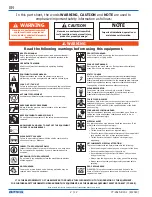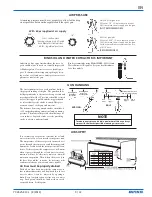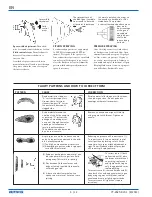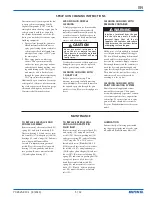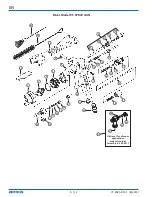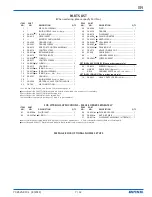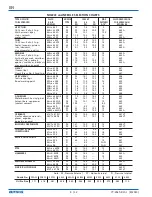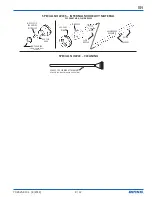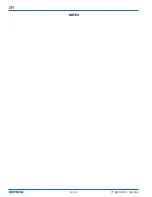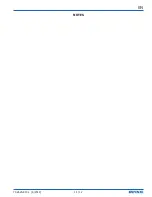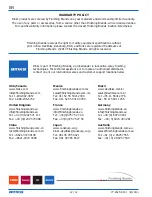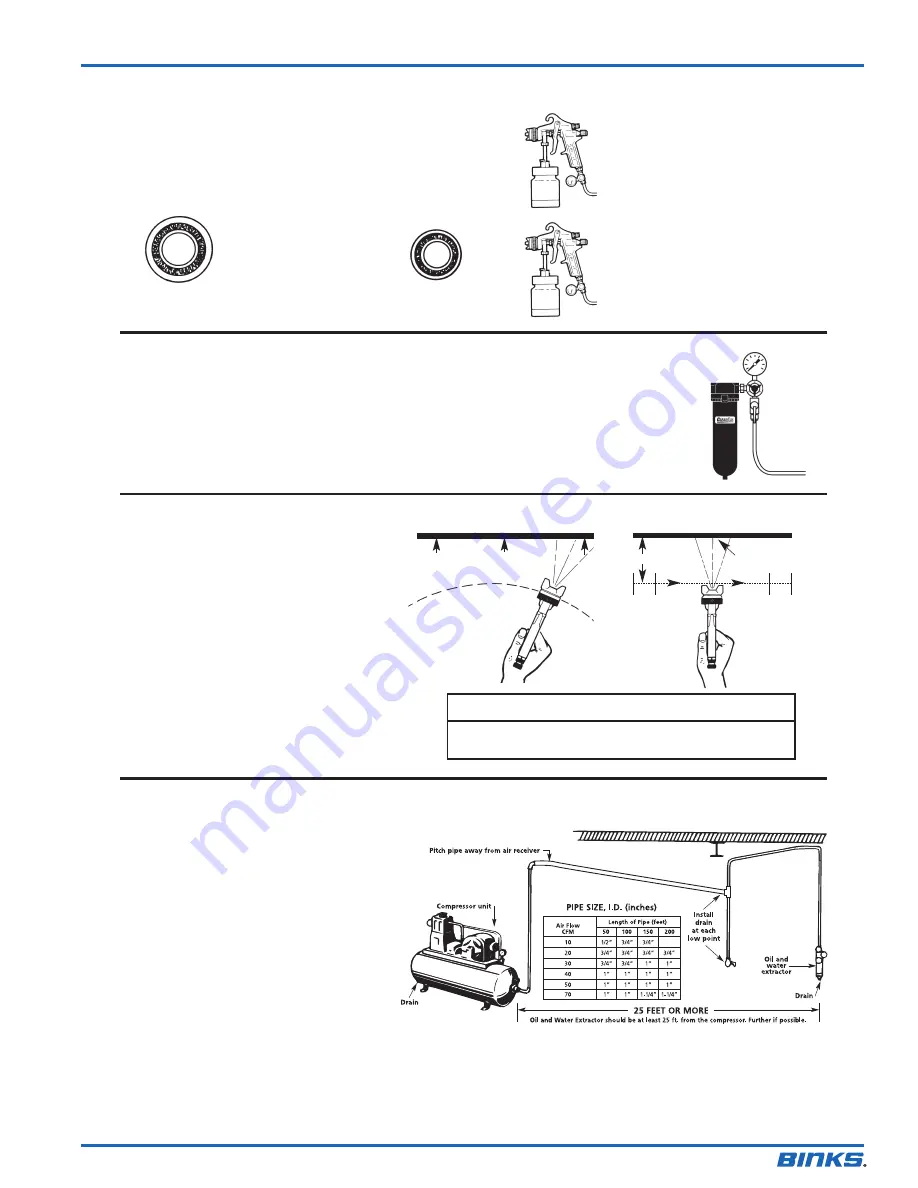
EN
77-2625-R13.1 (8/2014)
3 / 12
The first requirement for a good resultant finish is
the proper handling of the gun. The gun should be
held perpendicular to the surface being covered and
moved parallel with it. The stroke should be started
before the trigger is pulled and the trigger should
be released before the stroke is ended. This gives
accurate control of the gun and material.
The distance between gun and surface should be 6
to 12 inches depending on material and atomizing
pressure. The material deposited should always be
even and wet. Lap each stroke over the preceding
stroke to obtain a uniform finish.
NOTE
To reduce overspray and obtain maximum efficiency, always
spray with the lowest possible atomizing air pressure.
Coating should be even
and wet when spraying
Coating will
be light at
this point
Coating will
be heavy
at this point
Start
stroke
Pull
trigger
Release
trigger
End of
stroke
RIGHT
WRONG
TRAVEL OF GUN
6 to 12 inches
AIR PRESSURE
GUN HANDLING
BINKS OIL AND WATER EXTRACTOR IS IMPORTANT
5/16”
1/4”
Only 34 PSI at gun inlet
25 feet of 1/4” I.D. hose causes a drop of
26 PSI between the air supply and the gun.
(NOT RECOMMENDED)
48 PSI at gun inlet
25 feet of 5/16” I.D. hose causes a drop of
12 PSI between the air supply and the gun.
For this reason Binks recommends the use
of 5/16” hose.
(RECOMMENDED)
With 60 psi applied at air supply
Atomizing pressure must be set properly to allow for the drop
in air pressure between the regulator and the spray gun.
Achieving a fine spray finish without the use of a
good oil and water extractor is virtually impossible.
A Binks regulator / extractor serves a double pur-
pose. It eliminates blistering and spotting by keep-
ing air free of oil and water, and it gives precise air
pressure control at the gun.
Binks recommends using Model HFRL-508 Oil and
Water Extractor / Regulator. See your local distributor
for other models.
Cross section view
showing comparison of inside
hose diameters (actual size).
60 lbs. regulated pressure
It is extremely poor practice to mount the oil and
water extractor on or even near the compressor unit.
The temperature of the air is greatly increased as it
passes through the compressor and this compressed
air must be cooled before the moisture in it will con-
dense. If the air from the compressor is still warm
when it passes through the oil and water extractor,
moisture will not be effectively removed, but will
remain in suspension. Then, when the air cools in
the hose beyond the extractor, the moisture will
condense into drops of water and cause trouble.
Air lines must be properly drained
Pitch all air lines back towards the compressor so
that condensed moisture will flow back into the air
receiver where it can be removed by opening a
drain. Every low point on an air line acts as a water
trap. Such points should be fitted with an easily
accessible drain. See diagram.
AIR SUPPLY


